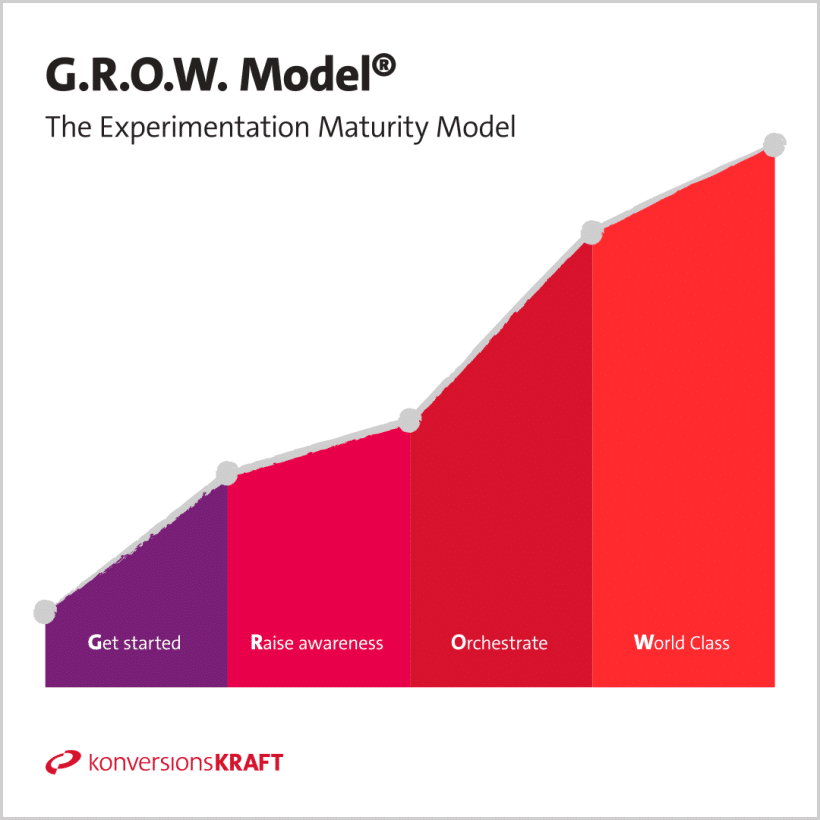Identify what your experimentation and testing program needs
- You and your team have a lot of ideas, and you test extensively, but are yet to have real success?
- You are convinced that investing in experiments is worthwhile, but you are still missing the proof of concept?
- You long for a real culture of experimentation?
In that, you are not alone! But the possible alternatives for how you can best continue now are numerous.
We have been in the market for 25 years, helping organizations grow digitally through experimentation and experience optimization. While hardly any two companies start from the same starting point, we observe a similar development trajectory across all industries. This is the foundation of our G.R.O.W. Model®.

The G.R.O.W. Model® comprises the success-critical dimensions of visibility within the company, culture & organization, skills & know-how, processes, data & technology. In recent years, we have successfully validated and further developed the model in customer projects and are thus able to evaluate an organization’s maturity level and derive target-oriented measures.

